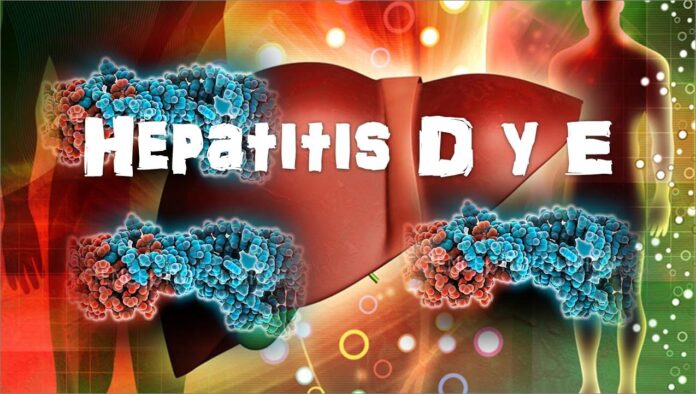Hepatitis D is an acute or chronic infection of the liver caused by a virus type RNA, which can occur either simultaneously with infection with hepatitis B (co-infection) or thereafter (overgrowth), is a more aggressive form than other forms of hepatitis.
As with hepatitis B, hepatitis D can cause both acute form of the disease and the chronic. Specific hepatitis D virus is its inability to cause infection alone is probably not only an incomplete viral particle.
Diagnosis and Transmission of Hepatitis D
To develop hepatitis D requires hepatitis B virus protection coverage and chronic hepatitis D occurs when it persists for more than 6 months after infection in the blood. In the case of co-infection hepatitis B and D viruses simultaneously, most patients are able to recover fully because co-infection causing acute form of hepatitis that can be diagnosed more easily so that only 2-5% of adults infected develop hepatitis chronic.
The situation becomes dramatic when super-infection (hepatitis D occurs after hepatitis B virus has already affected the body) so that 50-70% of infected people develop fulminate hepatitis, the VHD reproduce very easily, being in a favorable environment type B virus super-infection causes Almost all chronic hepatitis.
Symptoms
Hepatitis D (or delta) was discovered in 1978 by Italian Gastroenterology Mario Rizzetto and molecular virology expert John Gerin from George-town University in the US. Gastroenterology to see that some of the patients infected with hepatitis B virus infection showed a different form in their livers, and when the two viruses were present simultaneously, acute infection was more aggressive. Also, patients with both infections often develop chronic hepatitis than those only infected with hepatitis B.
Symptoms During Incubation:
Hepatitis D virus has an incubation period ranging between 3-7 weeks in co-infection. If super-infection, this incubation period shrinks to 3 weeks since D virus replicate more easily in the presence of B viruses, are already in the blood.
Specific Symptoms of The Disease:
Lacoinfectie phase underappreciated 3-7 days, accompanied by fatigue, nausea, anorexia and headache. In phase jaundice jaundice, accompanied by fatigue, nausea, clay stools and dark urine.
At overgrowth, jaundice, accompanied by fatigue, coagulopathy, difficulty concentrating, insomnia, personality disorder.
Transmission
Hepatitis D is transmitted in the same way as HBV virus, ie through contact with infected blood through unprotected sex (without a condom) and very frequently from mother to newborn baby.
Groups that are at increased risk for hepatitis D:
– People infected with hepatitis B;
– People with multiple sex partners or other sexually transmitted diseases;
– Children born to infected mothers;
– Doctors, dentists and hospital staff;
– Patients admitted in hospitals for long periods;
– People who have prolonged contact with infected people (family, friends);
– Recipients of blood transfusions;
– Injecting drug users;
– People whose blood may have come in contact with the saliva of an infected person with hepatitis viruses B + D;
– People who travel to countries with high prevalence of hepatitis B + D;
– Homosexuals (men)
Treatment
In case of acute hepatitis D infection, treatment is similar to other forms of viral liver infection: bed rest, diet, total avoidance of alcohol (and tobacco). Treatment of chronic hepatitis D is more complicated. Until now were tested treatments with alpha-interferon, lamivudine, immunosuppressive agents, but none has proved effective in treating this chronic infection with hepatitis D. Liver transplantation is an option if a liver largely destroyed or nonfunctional. But even if the procedure is successful, there is a high chance that the disease recur, and may develop cirrhosis more quickly. In our country, approved for the treatment of chronic hepatitis B + D baseaza on standard interferon dose is established depending on the virus to replicate. In the case of hepatitis D virus is active, the dose is 9-10 MU x 3 / week for a year.
Prevention
The best way to prevent hepatitis D infection is vaccination against hepatitis B virus because VHD can not develop only in the presence of HBV. Therefore, the vaccine that is available since 1982, prevent infection with both viruses. Unfortunately, for people already infected with hepatitis B, there is no vaccine to prevent superinfection with hepatitis D.
Other Methods of Prevention:
– Correct use of condoms every time, to count
About Author: Sanjeet is Health and Fitness Blogger. Works as Full Time Blogger @ Solo Bis Health Tips. I just posted an information about How To Improve Life After Addiction. I hope you may like to read it.









